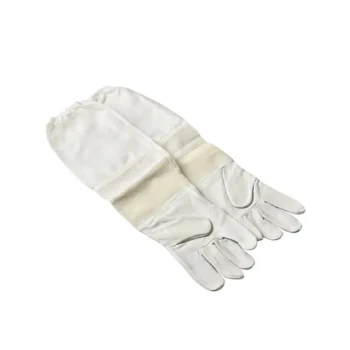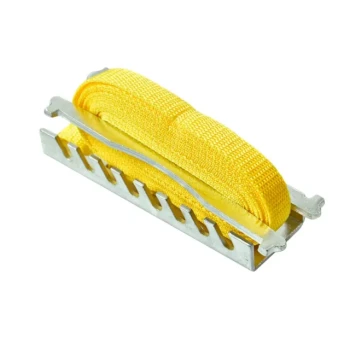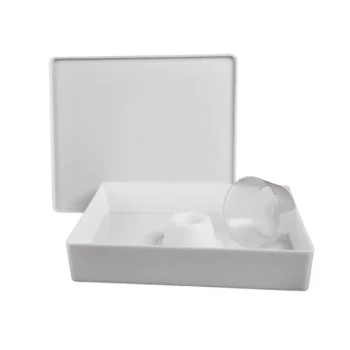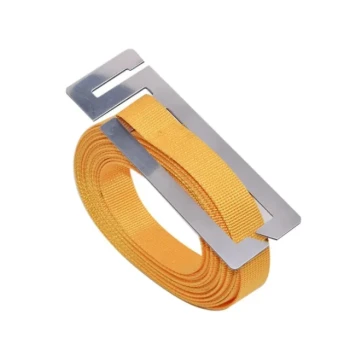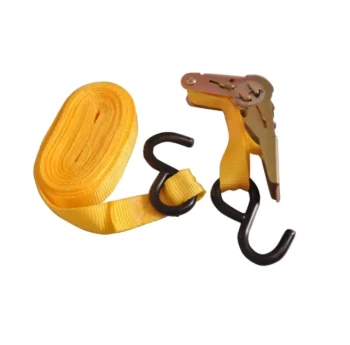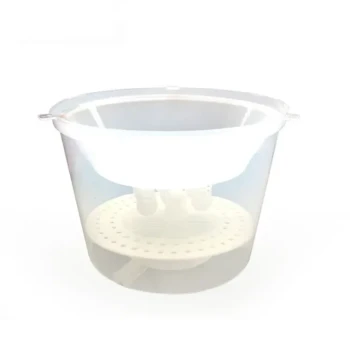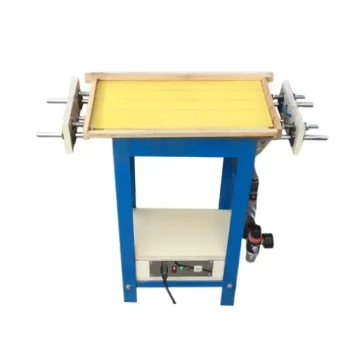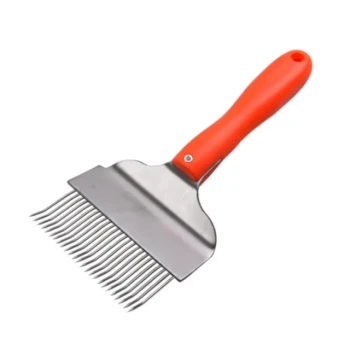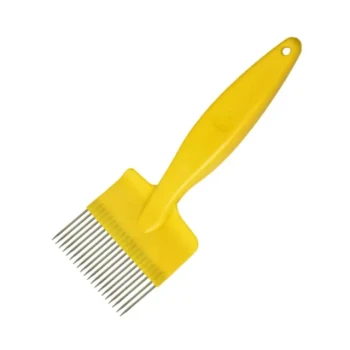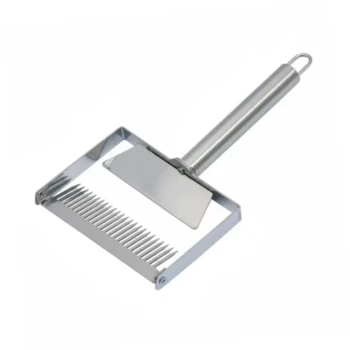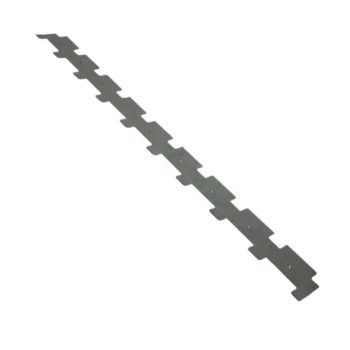Beekeeping gloves represent a critical investment for both hobbyists and commercial apiaries. While most beekeepers focus on sting protection and dexterity during use, research shows that improper storage methods degrade glove materials 2-3 times faster than typical wear-and-tear. This guide reveals the science behind moisture management, material preservation, and proactive maintenance—techniques that collectively add years to your glove's functional lifespan while supporting colony health through contamination prevention.
Preserving Your Investment
How Moisture Destroys Glove Materials (And How to Stop It)
Leather and nitrile—the two most common beekeeping glove materials—respond differently to humidity. Leather's natural hygroscopic properties allow it to absorb moisture from both the environment and the wearer's hands. While this creates breathability during use, stored leather left in damp conditions develops irreversible fiber damage. The material loses flexibility and becomes prone to cracking.
Nitrile, being synthetic, resists moisture absorption but faces degradation through condensation. When temperature fluctuations cause water droplets to form inside stored gloves, the material weakens at a molecular level.
Solution:
- Store gloves in a climate-controlled space (40-50% relative humidity ideal)
- Insert moisture-wicking fabric rolls (like bamboo charcoal pouches) into glove fingers
- Never store gloves directly after use—allow 12-24 hours of air drying
The Hidden Danger of Plastic: Microbial Growth Explained
Many beekeepers mistakenly store gloves in sealed plastic bags, believing this protects against pests. However, research on protective gear shows that anaerobic environments accelerate microbial growth. Leather gloves develop mold colonies within weeks, while nitrile surfaces become sticky as plasticizers migrate to the surface.
Solution:
- Use breathable cotton storage bags instead of plastic
- For long-term storage, add silica gel packets to control humidity
- Inspect gloves monthly for early signs of microbial spots
Creating a Pest-Proof Storage Environment: Beyond Mice
While rodents pose obvious risks, wax moths and hive beetles present lesser-known threats. These insects are attracted to residual propolis and beeswax on gloves. Their larvae can chew through leather and compromise nitrile's structural integrity.
Solution:
- Freeze gloves for 48 hours before seasonal storage to kill insect eggs
- Apply food-grade diatomaceous earth around storage containers
- Store gloves elevated on wire racks rather than directly on shelves
Advanced Shape Preservation Techniques
Temperature/Light Thresholds for Material Integrity
Studies on polymer and leather degradation reveal:
- Leather: Begins hardening at sustained temperatures above 80°F (27°C)
- Nitrile: Becomes brittle when stored below 50°F (10°C)
- Both materials suffer UV damage if exposed to direct sunlight for over 200 cumulative hours
Optimal Storage Conditions:
- Maintain temperatures between 55-75°F (13-24°C)
- Use opaque storage containers to block light
- Rotate glove positioning quarterly to prevent pressure points
Smart Alternatives to Tissue Paper Stuffing
Traditional tissue paper stuffing absorbs moisture but fails to maintain glove shape. These alternatives perform better:
-
Cedar Wood Hand Forms
- Naturally repels insects
- Maintains glove contours without overstretching
-
Memory Foam Inserts
- Customizable to individual glove sizes
- Returns to original shape after compression
-
Inflatable PVC Tubes
- Adjustable air pressure prevents creasing
- Doubles as a drying aid when connected to low airflow
Proactive Maintenance Routines
Seasonal Storage Checklists
Pre-Storage (All Materials):
☐ Brush off visible propolis with a stiff nylon brush
☐ Wash in cold water with pH-neutral soap (never bleach)
☐ Condition leather with beeswax-based balm (not petroleum products)
Active Season Checks:
☐ Inspect stitching weekly for loosening threads
☐ Test flexibility by bending wrist areas 20-30 times
☐ Check for thinning areas by holding gloves up to bright light
Diagnosing Storage-Related Damage
| Symptom | Likely Cause | Corrective Action |
|---|---|---|
| White powdery residue | Mold growth | Sun-dry for 2 hours, treat with vinegar solution |
| Sticky surface feel | Plasticizer migration | Wipe with isopropyl alcohol, store with activated charcoal |
| Deep transverse cracks | Repeated drying cycles | Rehydrate with lanolin, replace if cracks exceed 1mm depth |
Protect Your Beekeeping Investments with HONESTBEE
Commercial apiaries and distributors trust HONESTBEE's wholesale-focused beekeeping supplies for their durability and scientific design. Our storage accessories—from humidity-controlled glove cabinets to antimicrobial storage bags—are engineered to match the rigorous demands of professional beekeeping. Contact our equipment specialists today for bulk solutions that reduce replacement costs and keep your gloves colony-ready across seasons.
Note: All preservation techniques referenced are compatible with HONESTBEE's full range of beekeeping gloves and have been tested in commercial apiary environments.
Visual Guide
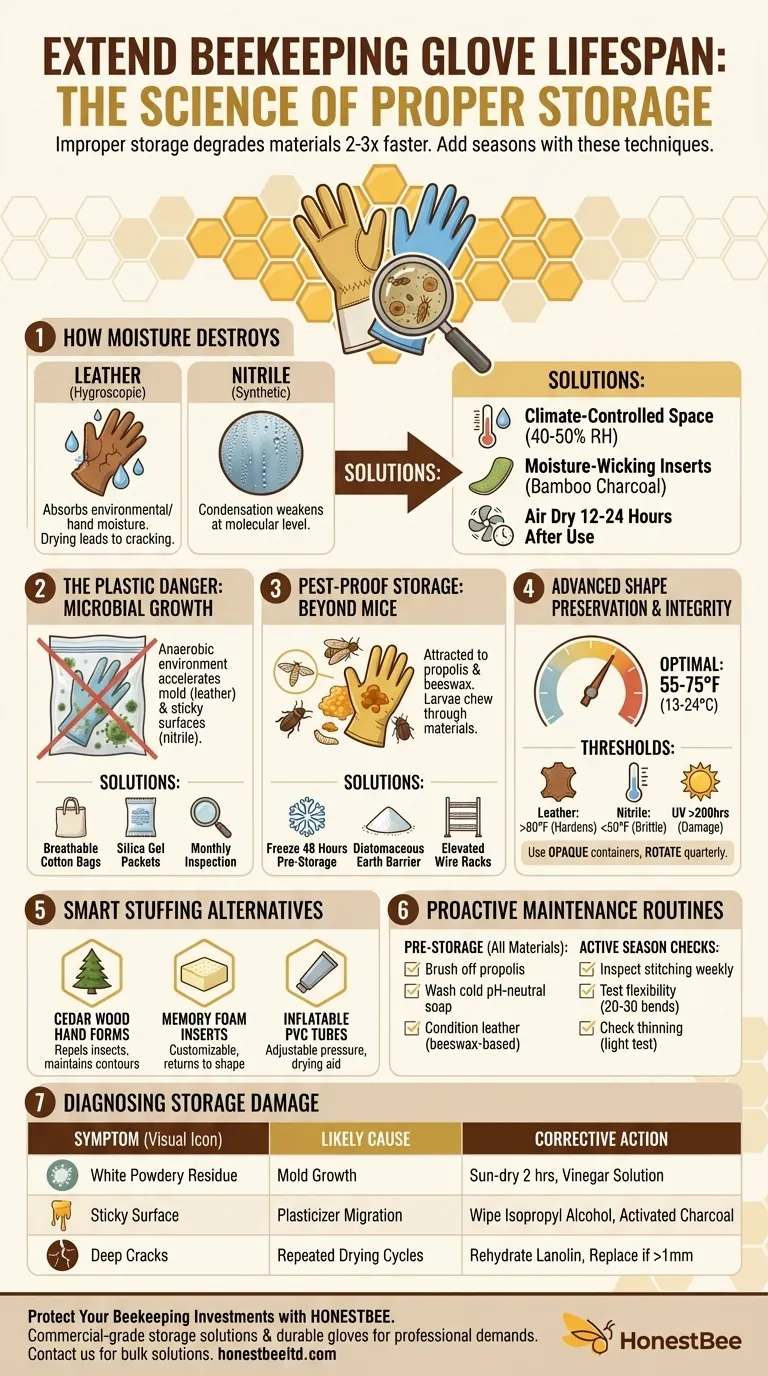
Related Products
- Beekeeping Gloves Goatskin Leather with Long Cotton Sleeve for Beekeepers
- Goatskin Leather Beekeeper Gloves with Vent Long Sleeve for Beekeeping Honey Bee Sting Proof Protection
- Goat Skin Leather Bee Sting Proof Beekeeping Gloves with Canvas Sleeve
- Mesh Ventilated 3 Layer Goatskin Beekeepers Gloves for Beekeeping
- Professional Galvanized Hive Strap with Secure Locking Buckle for Beekeeping


